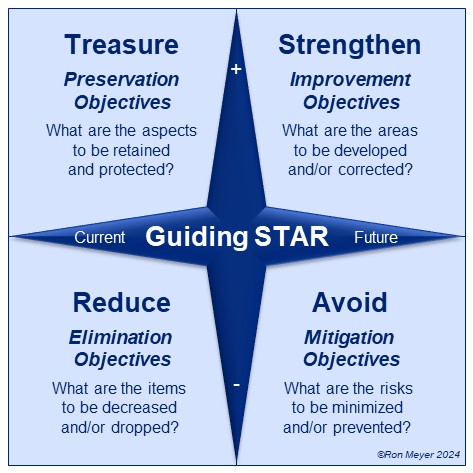An objective is something you wish to realize – an aim you want to achieve. If you don’t have objectives, any future direction will do, and you will drift around. Or as the Cheshire Cat in Alice in Wonderland put it: “If you don’t know where you are going, any road can take you there”.
So, to have a sense of direction and avoid ad hoc wandering, it is essential to have clear objectives. The more these objectives are SMART – Specific, Measurable, Actionable, Realistic and Time-bound – the more intentional and directed the efforts can be of the person, team or organization that sets them.
The Guiding STAR Matrix gives an overview of the four groups of objectives that are always needed in every situation to set a well-considered future direction, whether it is for an individual, group or entire organization. Often, people will only think about what needs to be strengthened moving forward, but the Guiding STAR Matrix indicates that after the S, objective-setters should follow the other letters of the STAR abbreviation to create a complete picture of what to aim for. Only with all four categories filled will a brightly shining star emerge to guide people in taking the best possible steps into the future.

The four categories of objectives that should always be determined are the following: